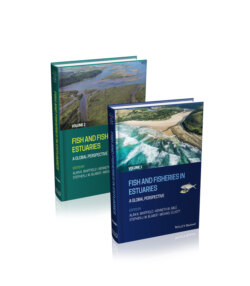Читать книгу Fish and Fisheries in Estuaries - Группа авторов - Страница 60
3.3.4 Larval and juvenile production: growth and mortality
ОглавлениеSuccess or failure of cohorts or year classes owes to mortality and growth rates, variability in those rates and the cumulative mortalities in egg, larval and juvenile stages. Hydrodynamics, migration histories and feeding success, in addition to poorly understood predation processes, mold survival outcomes. For many species, hydrodynamics set the stage while trophodynamics fuel growth and survival trajectories. Growth and mortality processes do not act independently (Cushing 1975, Houde 1987, Anderson 1988). For example, variable growth rates result in variable stage durations, a key factor controlling stage‐specific mortality and abundance at the end of the larval stage, or at recruitment (Houde 1997b, 2016).
Estuary‐dependent and ‐associated fishes display numerous life‐history modes, increasing the possibility of stage‐specific and habitat‐specific variability, or shifts, in growth and mortality rates. For taxa that spawn offshore, variability in the offshore environment, including circulation patterns and hydrographic features that are critical for transport of eggs and larvae, may govern the observed variability in growth and mortality rates (Heath 1992). Within the estuary, numerous environmental factors act on eggs and larvae of resident taxa, anadromous spawners and pre‐settlement immigrants from offshore.
The high and variable mortality rates and processes acting on early‐life stages are major drivers that generate variable recruitments (Houde 1987, 1997b). Much of the literature on early‐life mortality, while directed to ocean species, is equally applicable to estuarine fishes. The influence of Hjort (1914, 1926), who proposed massive and variable mortalities during the first‐feeding period (i.e. the critical period), became widespread, but Hjort's hypotheses were hardly evaluated for marine and estuarine fishes until the 1970s. Despite shortcomings (Leggett & Deblois 1994), the critical period hypothesis has appeal in explaining recruitment variability (Houde 2008). An equally compelling and related idea put forward by Cushing (1990) is that synchrony in larval production with that of their planktonic prey in a ‘match‐mismatch’ scenario could determine the fates of year classes. There is considerable evidence supporting this hypothesis for estuarine and marine fishes (Peck et al. 2012b, Houde 2016).
Earliest life stages of estuarine and marine fishes suffer high (typically >99.9%) mortality. But, high mortality rates alone may not be the decisive factor controlling abundance at recruitment. It is cumulative mortality and the stage‐specific variabilities prior to the stage defined as recruitment that primarily determine recruitment levels and variability (Sissenwine 1984, Houde 2008). The life stage at which recruitment is set may differ amongst years, or amongst cohorts produced in a year, depending on variability in mortality rates, growth rates and stage durations. In the estuary, factors governing survival can be highly variable and, additionally, mortality of early‐life stages in estuaries sometimes is episodic (Houde 1989b). Environmental challenges may be especially critical when associated with transitions from the ocean to the estuary, including metamorphosis and settlement. An example of this circumstance is seen in the paralichthyid Paralichthys dentatus, which ingresses into estuaries during the metamorphic, eye‐migration stage (Figure 3.4). A potential for bottlenecks in the path to recruitment exists if the factors influencing a stage either block or impede its transition (i.e. survival) to subsequent stages. The complex life histories of many estuary‐dependent species elevate the possibility of reproductive and recruitment bottlenecks and associated mortality, attributed to environmental variability, e.g. weather events, freshwater availability, dissolved oxygen, altered flows and habitat deficiency.
In early‐life stages of estuary‐dependent fishes, growth is rapid and mortality rates are high, but generally similar to rates of other marine fishes (Houde & Zastrow 1993). Usually, the environmental and trophic processes controlling mortality and growth of eggs and early‐stage larvae are mostly density independent and the rates are sensitive to availability of prey resources and intensity of predation (Cowan et al. 2000; Cowan & Shaw 2002). Later, processes acting on juveniles, while still mostly driven by density‐independent, environmental controls, may include a substantial component of density‐dependent regulation (Van der Veer 1986, Houde 1987, Myers & Cadigan 1993, Rose et al. 2001, Van der Veer et al. 2015). For example, in estuary‐dependent pleuronectiforms, such as Pleuronectes platessa, Platichthys flesus and Solea solea, there is a period at settlement when abundance of newly metamorphosed juveniles may be regulated by density‐dependent predation (Van der Veer 1986, Van der Veer et al. 1991, 2015, Nash & Geffen 2012). In other taxa, shifts towards density‐dependent regulation in young‐of‐the‐year juvenile stages were demonstrated, e.g. in the lateolabracid Lateolabrax japonicus (Shoji & Tanaka 2007a, 2008) and moronid Morone saxatilis (Kimmerer et al. 2000, Martino & Houde 2012).
